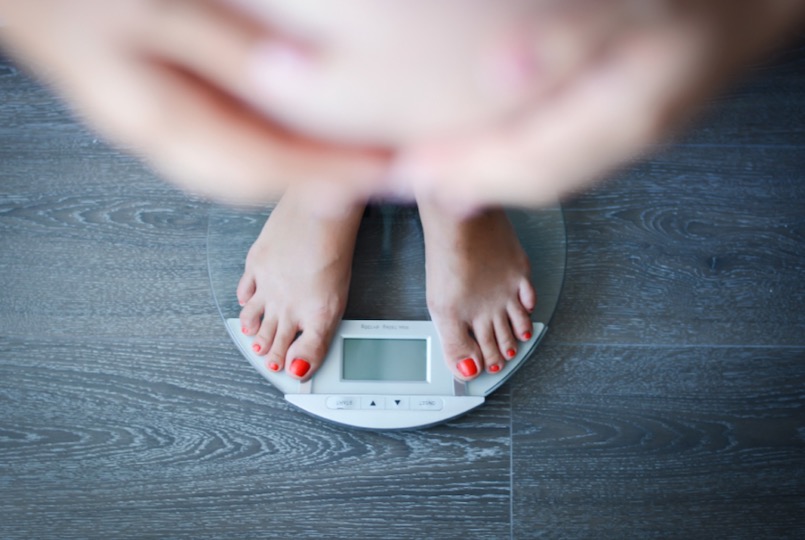Premenstrual syndrome (PMS) is a complex disorder triggered by hormonal changes that typically occur after ovulation. Roughly one in two women experience some form of PMS in their lifetime. The condition itself is associated with numerous unpleasant symptoms ranging from mild-to-moderate including tiredness and fatigue, depression, and, oftentimes, weight gain due to overeating.
Believe it or not, you can effectively alleviate many symptoms of PMS by making simple lifestyle changes. Here are seven key strategies that work.
Regularly Engaging in Resistance Training
When performed regularly, resistance (weight) training can help alleviate the fatigue, anxiety, and depressive symptoms associated with PMS. This type of training specifically increases levels of “feel good” hormones called endorphins, which are significantly lower in women burdened by PMS. The best part about resistance training is that it can easily be performed with minimal to no equipment.
Start by simply performing about 20-30 minutes of training with handheld weights or calisthenics (pushups, squats and dips) at least 2-3 days each week.
Related Article: 8 Reasons Why Women Should Weight Train
Increasing Calcium Intake
Although calcium is best known for its critical role in maintaining bone health, this vital mineral has also been proven beneficial in the treatment of common PMS symptoms like fatigue, changes in appetite, and even depression. A daily intake of 1,200-1,600 milligrams of calcium is recommended for maximum symptom relief.
Adequate amounts of dietary calcium can be obtained from dairy foods or fortified soy products but most vegetables, legumes, nuts, seeds, and dried fruit also contain calcium. In cases of dietary deficiency, calcium supplements are another valuable option for increasing intake.
Related Article: The Importance of Getting Enough Dietary Calcium
Getting Adequate Amounts of Vitamin D
High consumption of vitamin D can help alleviate numerous PMS-related symptoms. Vitamin D is crucial for intestinal absorption and metabolism of calcium. When calcium intake is sufficient, vitamin D supports adequate regulation of hormonal fluctuations associated with PMS. Sun exposure is perhaps the most important source of vitamin D.
Regularly exposing the face, arms, and hands to direct sunlight for at least 5-15 minutes a day will ensure an ample supply. Vitamin D can also be obtained from dietary sources including fatty cold-water fish, fish oils, butter, eggs, and fortified foods.
Related Article: Vitamin D: Why You Need it and How to Get It
Adding More Magnesium to the Diet
Magnesium is the fourth most abundant mineral found in the body and also among the most beneficial for treating PMS. In fact, numerous studies have demonstrated positive effects of magnesium on reducing classic symptoms like anxiety, depression, joint and muscle pain, water retention, and pronounced cravings.
To reap maximum benefits, make an effort to consume at least 400-600 milligrams of magnesium each day. This can easily be achieved by eating a diet rich in leafy green vegetables, legumes, nuts and seeds, whole grains, and fish with additional intake by way of supplements if necessary.
Upping Intake of Protein-Rich Foods
High-protein foods are packed full of tryptophan, an essential amino acid used by the body to make serotonin. Serotonin is a chemical in the brain that functions in promoting relaxation and reducing anxiety. Mood-related PMS symptoms (fatigue and irritability, anxiety, and depression) are linked to lowered serotonin levels. Through its effects on serotonin, tryptophan has been proven beneficial in alleviating anxiety, depression, and other associated PMS symptoms.
For maximum relief, include 2-3 servings of lean protein (poultry, fish, eggs, dairy foods, and soy products) in your daily diet.
Related Article: Nutrition Basics: Your Daily Protein Intake
Boosting Vitamin E Consumption
Vitamin E (α-tocopherol) is a potent fat-soluble antioxidant that naturally protects the body from illnesses linked to free radical damage. Interestingly, regular consumption of this powerful antioxidant can also reduce many physical symptoms of PMS including joint and muscle pain, cramps, and breast tenderness.
A daily intake of 400 international units of vitamin E is recommended for the treatment of PMS. This can easily be obtained by incorporating healthy fats (vegetable oils, nuts and seeds), green leafy vegetables, and whole grains into the diet.
Including Yoga and Meditation in Your Routine
Yoga and meditation are both effective for boosting mood and relieving depression during that time of the month. Opt for gentle yoga poses and stretching exercises (upside down relaxation, child’s pose, and the corpse pose) combined with 5-15 minutes of deep meditation every day. Such strategies may also help to ease joint and muscle pain associated with PMS.
To enhance relaxation, use natural essential oils during yoga and meditation. Essential oils like lavender, chamomile, ylang-ylang, clary sage, and jasmine can greatly aid in relieving numerous PMS symptoms.
If you’re one who’s burdened by mild-to-moderate PMS, following these simple strategies can significantly curb associated symptoms. However, if your symptoms are more severe, consult with a physician or other healthcare provider, as this could be a sign of a more serious disorder.







